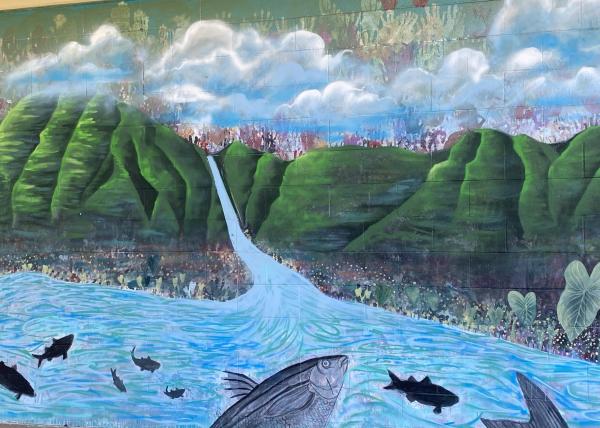My Thinq Fellowship has afforded me the privilege to explore what pedagogy means to me and how it can be culturally sustaining. Thanks to a grant from CU Denver's Office of Research Services and my Thinq course buyout this year, I have the time and means to explore culturally sustaining pedagogy through a Grow Your Own (GYO) teacher program called Ka Lama in Wai’anae, O’ahu, Hawai’i.
Ka Lama is part of a larger organization called INPEACE (Institute for Native Pacific Education and Culture), and I have partnered with them in GYO work since 2017 through the Grow Your Own Collective, which I co-lead.
In October 2022, I had the honor of visiting Wai’anae and sitting down with educators, administrators, and program leaders to learn more about their education system, teacher preparation practices, and how Kanaka language, culture, and traditions are braided into the fabric of state and federally mandated curricula. I am still in the beginning stages of this study and will be heading back out for more classroom and community observations in the Spring, but I wanted to use my time on this Thinq blog to record my initial experiences and wonderings, and I hope to continue to document this exploration of my own learning through future blogs. These blogs may not feel complete, and this is purposeful. I hope that our Thinq community pushes me to consider new perspectives as I continue to share, and I invite folx to wonder with me as I figure out what pedagogy means in culturally woven spaces and if or how such pedagogy can (should?) be replicated elsewhere. So…here goes:
My starting questions with this project is “What is pedagogy?” and “What does it mean to have a culturally sustaining pedagogy?” I personally feel that almost anything can be culturally relevant. It’s easy to tie cultural traditions, language, and customs to a lesson plan or unit, but to keep it going? To live Aloha? To know that when your students come to school every day, they know to expect certain cultural norms and to have a day without them would be out of the ordinary? To me, this is a culturally sustaining practice and I want to know what schools do to cultivate it.
Fast forward to MANY iterations of an IRB (Institutional Review Board) and Data Sharing Agreement between CU Denver and Hawai’i Department of Education (HIDOE) getting finalized 72 hours before my flight out to O’ahu. In, what feels like an Olympic turnaround time of calls and emails, my main contact at INPEACE (Institute for Native Pacific Culture and Education - a community-based organization situated in Wai’anae, Hawai’i) organized interviews and meet-ups for me before my plane touched down. Even some of my participants were shocked that I was able to get the HIDOE IRB to sign off because getting research done out here can be so difficult. I replied that “now that it IS signed off, I’m not wasting it! You’ll be seeing more of me.”
Let’s talk story…
- Talk about your experiences developing an IRB. Have you partnered with outside organizations, schools, or community programs?
- How can we demystify this process and support young faculty to be successful as they engage in new projects?
- How can we better bridge partnerships between the university and partner programs?
